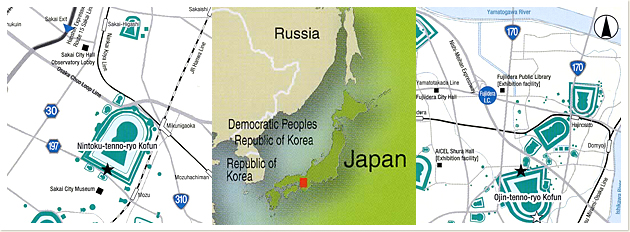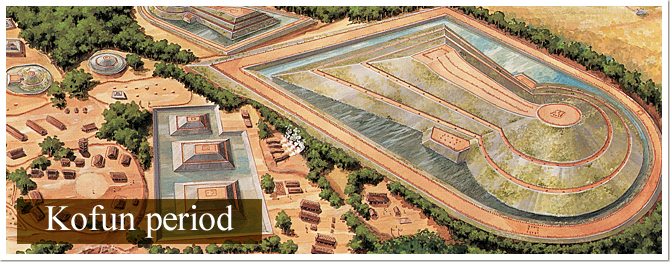Nonaka Kofun and the Mozu-Furuichi Tomb Clusters
Built on the Osaka Plain, The Mozu-Furuichi Tomb Clusters are among the largest tomb groups in Japan. Over 220 tombs of varying sizes were constructed between the two clusters. They represent a valuable legacy of Japan's tumulus culture, housing two of the world's largest tombs: the colossal zenpō-kōen-fun of Daisen Kofun (traditionally assigned to King Nintoku) and Konda-gobyōyama Kofun (traditionally assigned to King Ōjin).
Forming a part of the Furuichi Tomb Cluster, Nonaka Kofun was built near Hakayama Kofun, the fifth largest in scale among that cluster, and is often referred to as a baichō (satellite tomb), meaning a small kofun subordinate to a larger tomb.
Although small in scale, Nonaka Kofun is one of the few kofun that has been investigated among tombs of the Furuichi Tomb Cluster. While the identity of the interred is still shrouded in mystery, the presence of technologically advanced weapons and armor imply military power, the wide range of tools and farming implements suggest productive and technological strength, and a truly enormous amount of highly prized iron goods reveals economic power. Nonaka Kofun can thus be interpreted as the epitome of the elements that made possible the construction of the Furuichi Tomb Cluster.
 |
Reproduced from the brochure Sekai
Bunka Isan wo Osaka ni - Mozu / Furuichi Kofungun (Bringing a World Cultural Heritage Site to Osaka – Mozu-Furuichi Tomb Clusters)
(Urban Attraction Division, Urban Attraction Creation Bureau, Department of Civic and Cultural Affairs, Osaka Prefectural Government, 2012)





